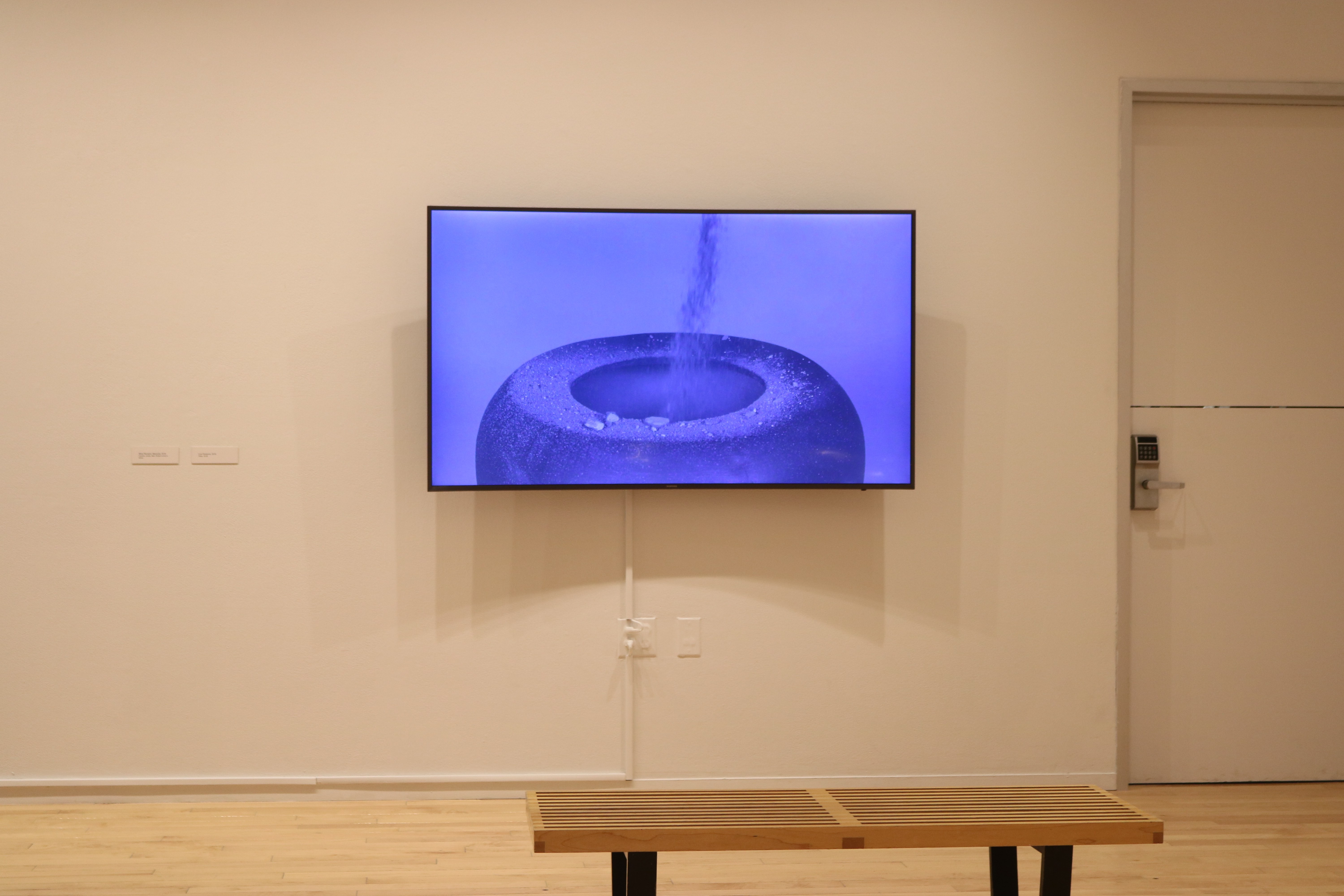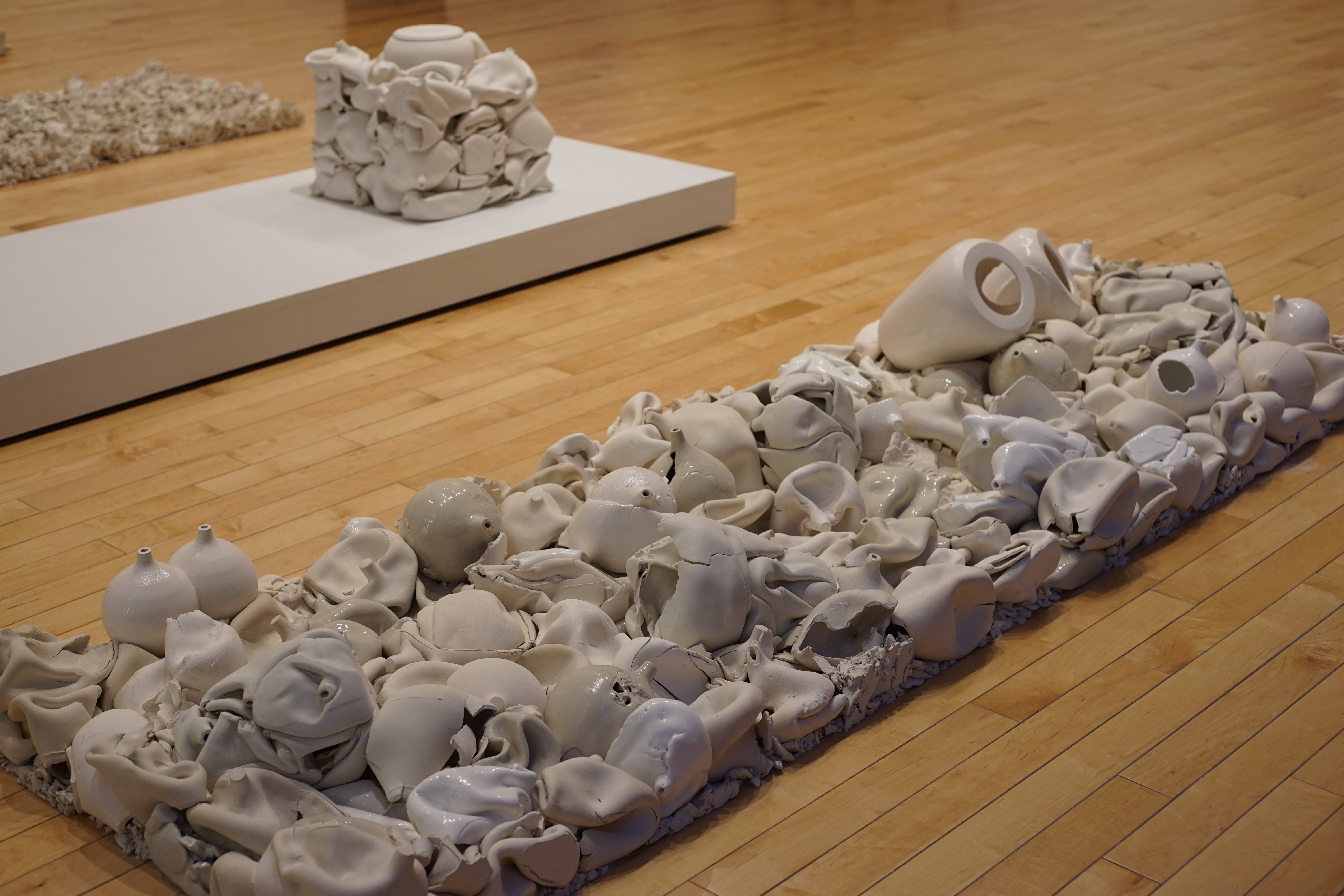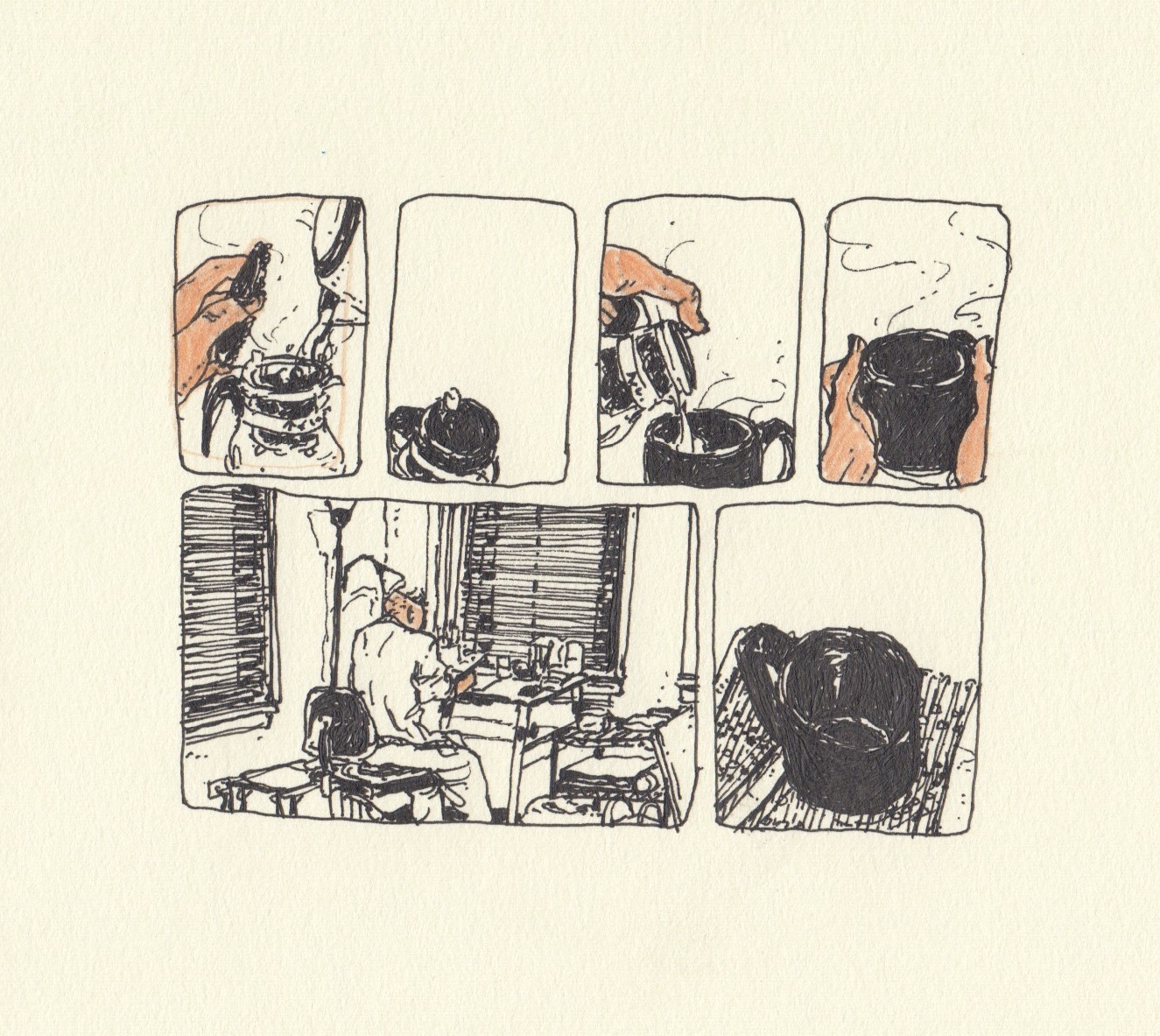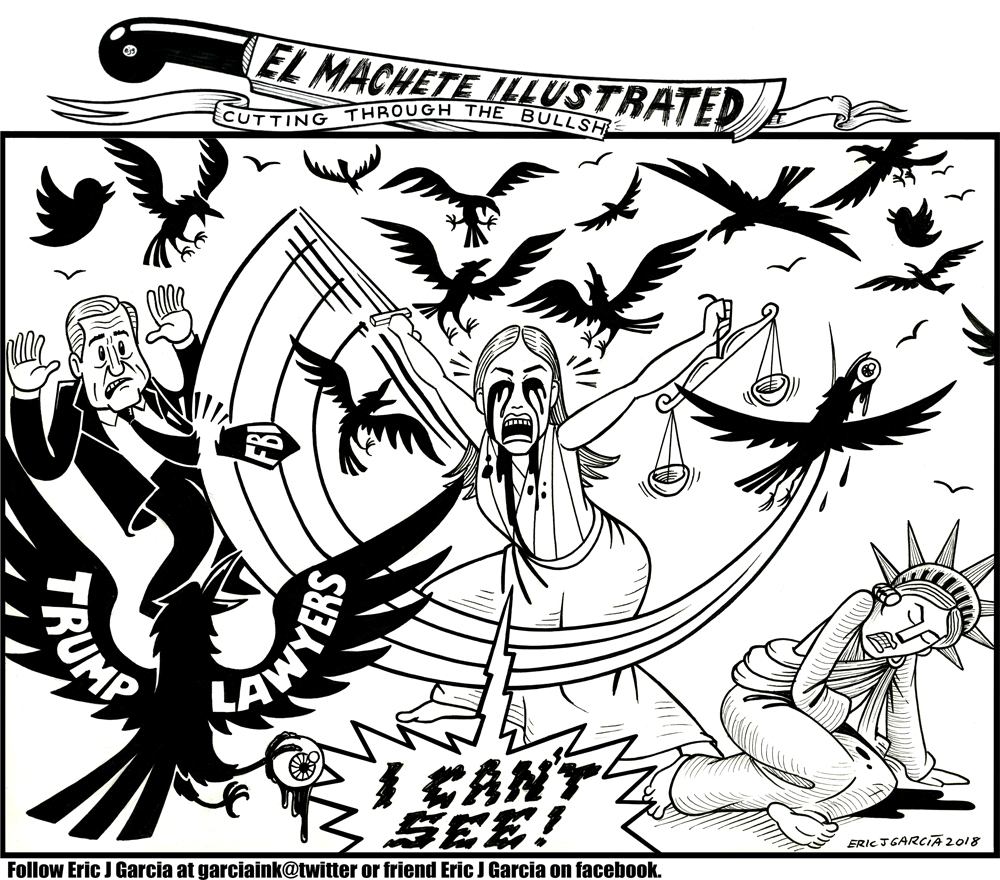
Does grieving for someone end when the last of the sand has been patted down over the grave of a loved one? Does it go on, slipping into conversations, creeping in while rummaging through memorabilia — or peep in when you are looking at photographs and videos? Or, does it find a way into the work you do every day, until you give those feelings a place inside of a tangible object.
Ben Harle’s show, “The Permanence of Loss,” at the School of the Art Institute of Chicago’s (SAIC) SITE galleries, puts these turbulent emotions into fragile, glazed, ceramic, black-and-white urns. Traditionally, ceramic urns were designed to store the ashes of a cremated body; using plaster, ceramic, neon lights, and videos, Harle offers a selection of objects and installations through which one can contemplate death. With a practice that examines life cycles while using clay as memories converted into tangible objects, he draws attention to how we commemorate loved ones we’ve lost. Focused less on who, when, and how — and more on the afterlife or memory — Harle’s work offers a space for viewers to contemplate the different ways we discuss death.
In his 13-minute-and-37-second film, titled “What Remains: Memory,” (2017) Harle brings together various strings of thoughts, processes, and emotions. The video begins with an animated clock ticking: a recurring pause that he includes between cutaways of different stills. In one of them, a gravestone floats across the screen. After a brief pause, a label for a bag of cement follows. In the second part of the video, the artist is filmed transferring the ashes of his grandfather into an urn, one teaspoon at a time, then emptying the entire bag. Carefully folding it — cleaning the space, putting it away, dusting the mouth of the urn — he performs each action patiently, taking his time. Much like grieving, Harle’s process is measured and tender. The third and final part of the video shows the white urn sealed. On the clock in his video, a minute has passed.

The bench that I watched this video from was close to a larger, open urn, entitled “What Remains: Memorial” (2018). Made of ceramic, acrylic, and Robert Lemont’s ashes (the artist’s grandfather), it feels like the strongest piece in the show. A light is installed inside, holding up a black urn similar in shape and form to the white urn in the video. One needs to engage with the piece, to peek inside and view; to think about the ashes, or possibly burying a loved one of their own.
Other pieces in the show, like “Memorial Plots 1-4,” (2018) showcase a series of white ceramic pots in different forms — full, shattered, punctured, and held together to fill three rectangular plots. Ideas of death and loss are rooted in real experiences; the urns, a more personal form of dealing with grief, are special to the artist, whereas burial plots are an idea more familiar to most people.

For Harle, clay acts as a gradually-fading memory, forever shifting and changing. “Firing a ceramic object freezes it in time and allows the material to last forever,” he explains in his artist statement. “The physical substance can never return to its original state although the artifact may shatter or break.” Similarly, burying a loved one is a way to freeze loss, putting their body to rest while accepting that they may never return to their original state. Playing with this idea, Harle’s previous work has pushed the boundaries of what traditional urns look like. By slip casting porcelain bottles and compressing them before firing, he creates urns that look ruptured — like the life has been sucked out of them. A large portion of the white urns in the show come from the development of his previous pieces.
Through his fragile ceramic structures, Harle’s work draws attention to how fleeting a subject like loss can be; yet we continue to memorialize it into solid objects.
“Permanence of Loss” is currently on display at SITE, in the Sharp Building, 37 S. Wabash Ave., through February 17.







